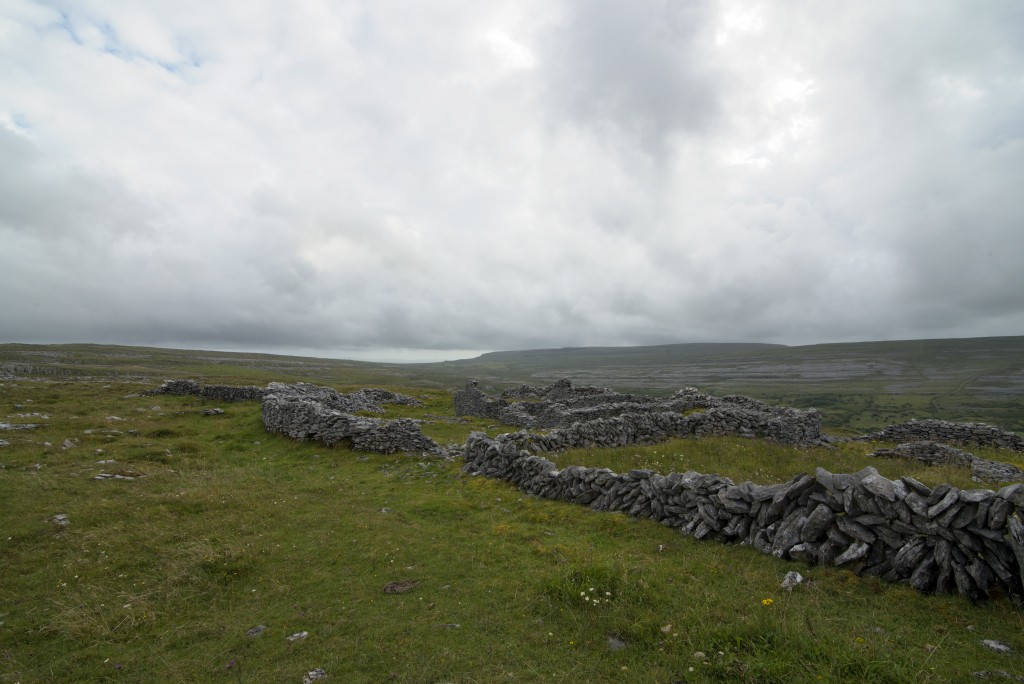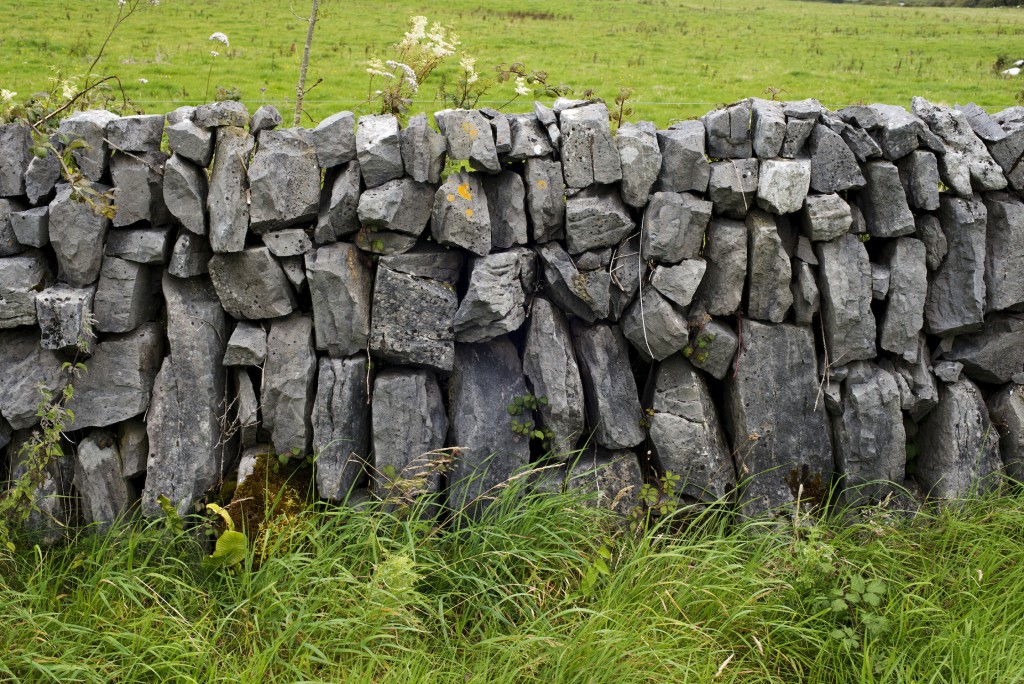
ムーニー・スザンヌ
Mooney Suzanne
移動 / 都市 / 風景
全ての都市に、文化、歴史、そして特徴があります。馴染みの都市で、私たちは小道や通りを抜け、公共機関の交通網や、決められた道を使って、住居だけでなく、商業ビルや公共の建物の間を移動します。しかし、どれほど頻繁にそのルートから外れることがあるでしょうか?いつものルートの裏側、下、上、間や内側には何があるのでしょう。このレポートシリーズでは、私たちはどのようにある地点から別の地点まで移動しているのか、都市の壁の存在と、それを超えるもの、さらに、注目をされていない空間が、どのようにアートと交流の場として再利用されるようになったのかということについて考えます。
02 包含し、守り、分ける、壁
Warning: Use of undefined constant - assumed ' ' (this will throw an Error in a future version of PHP) in /home/users/2/abi0707/web/a-b-i.info/wp/wp-content/themes/abi/single-story.php on line 49
まちや住居の壁には役割があります。所有物を包含し、人間や自然からの防壁を形成します。それにもかかわらず、壁はその本質として、分けるものです。空間、人、そして私たちの社会では、公共の場と個人の場を分けています。上や外に突き出しながら、空間を線引きし、物質的境界を築いています。
ベルリンの壁(1961年-89年)の建設や取り壊し、北アイルランドの「ピース・ウォール」(1969年-)-フォールズ・ロードやシャンキル・ロードなど、北アイルランド問題によって影響を受けた、主にベルファストの地域-、そして、イスラエル西海岸地区の分離壁(2003年-)など、近年の歴史で、壁は、繰り返し物理的、政治的境界として、区切り、分離するために建設されてきました。ヨーロッパの多くの都市で、昔の城壁の痕跡を今でも目にすることができ、計りがたいスケールで作られた万里の長城※1とハドリアヌスの長城※2の防壁は、最も顕著な過去の時代の建造物です。昔の都市で、壁は、防壁としてその中に住む特権階級の人々を守るため、そしてそれ以外の人々への社会的身分を喚起させるために使われていました。それに加え、資産と領土の所有の境界を定めるためだけに建設された壁もあります。実際に、アイルランドの地方のおそらく最も独自な特徴は、“ドライ・ストーン・ウォールズ”の連なりで、所有物を区切る境界線となる景観として縦横無尽に広がっています。これらの壁は、モルタルを使用せず、石だけを使用する伝統的な方法で建設されています。アイルランドには、農地から退けた石を利用し、道具を使わず手作業で建設された50万キロにも及ぶドライ・ストーン・ウォールズが現在も見られ、肥沃な、そして痩せた地域のそれぞれに人間の存在を示しています。近年では、当初の意図にかかわらず、ほとんど歴史となった壁は、郷愁の目で見られ、観光の名所となり、世界遺産とまでなっています。
ベルリンの壁(1961年-89年)の建設や取り壊し、北アイルランドの「ピース・ウォール」(1969年-)-フォールズ・ロードやシャンキル・ロードなど、北アイルランド問題によって影響を受けた、主にベルファストの地域-、そして、イスラエル西海岸地区の分離壁(2003年-)など、近年の歴史で、壁は、繰り返し物理的、政治的境界として、区切り、分離するために建設されてきました。ヨーロッパの多くの都市で、昔の城壁の痕跡を今でも目にすることができ、計りがたいスケールで作られた万里の長城※1とハドリアヌスの長城※2の防壁は、最も顕著な過去の時代の建造物です。昔の都市で、壁は、防壁としてその中に住む特権階級の人々を守るため、そしてそれ以外の人々への社会的身分を喚起させるために使われていました。それに加え、資産と領土の所有の境界を定めるためだけに建設された壁もあります。実際に、アイルランドの地方のおそらく最も独自な特徴は、“ドライ・ストーン・ウォールズ”の連なりで、所有物を区切る境界線となる景観として縦横無尽に広がっています。これらの壁は、モルタルを使用せず、石だけを使用する伝統的な方法で建設されています。アイルランドには、農地から退けた石を利用し、道具を使わず手作業で建設された50万キロにも及ぶドライ・ストーン・ウォールズが現在も見られ、肥沃な、そして痩せた地域のそれぞれに人間の存在を示しています。近年では、当初の意図にかかわらず、ほとんど歴史となった壁は、郷愁の目で見られ、観光の名所となり、世界遺産とまでなっています。

Dry Stone Walls, The Burren, Ireland, 2015

Dry Stone Wall (detail), The Burren, Ireland, 2015
まちや定住について考えるとき、思い浮かぶのは住む空間を作るための平面、壁、線の集合体です。私たちは建設し、居住します。しかし、常にその方法であるというわけではありません。遊牧民の生活様式や穴居生活(先史時代、または現代)では、壁の建設は必須ではありません。現在、中国で推定3000—4000万人の人々が、建設された住宅より、効率の良い断熱性をもつヤオトン(横穴式住居)を好み、そこに住んでいます。穴居住宅は壁を使わずに建てられます。発見したり、穴を掘ることで作られた、地形に埋め込まれた空間です。ファサードを建設することで完成することもありますが、それは構造上不可欠なものではありません。本質的に居住者は、地形を利用し、その中に住んでいます。住居のためにその土地を改造することより、存在している形を使用した地形に合わせた住居は、近年の建築で時々実験されていますが、まだ典型となるまでには遠い道のりです。自然の地形の中に住むということは、人工対有機、都市対自然といった厳格な二分をするより、少なくとも確実に住居を考える一つの手段です。21世紀初頭の工学、建設方法の発達によって、かつては理想主義のデザインとされた意欲的なプロジェクトの実現が可能となりました。今世紀は、新しく発見された技術を使って、新しい都市景観を作る、メタボリズム建築家の新たな波が起こる時代かもしれません。

Completed construction project (A), Sandyford Industrial Estate, South Dublin, 2015
(日本語訳協力:Ayami Mori)
※1 初期の部分は、紀元前7世紀に建設され、数百年にわたって段々と大きな壁を形作ってきた。
※2 ローマ皇帝ハドリアヌスの指示の下で、ローマ帝国のフロンティアとして122年に建設された。
参考文献
『ザ・バレン・ウォール』(ゴードン・ダーシー、ティラ・イオラス、2006)
『イントロダクション・トウ・ナチュラル・アンド・マンメイド・ディザスターズ・アンド・ゼア・エフェクツ・オン・ビルディングス』(ロクサーヌ・マクドナルド、ラウトレッジ、2007)
『チャイニーズ・アース・シェルタード・ドゥエリングス:インディジェナス・レッスンズ・フォー・モダン・アーバン・デザイン』(ギデオン・ゴラニィ、ユニバーシティ・オブ・ハワイ・プレス、1992)
『メタボリズムの未来都市展——戦後日本・今甦る復興の夢とビジョン』(八束はじめ、クワァン・セン、豊川斎赫、中森康文他著、東京:森美術館、2011)
※1 初期の部分は、紀元前7世紀に建設され、数百年にわたって段々と大きな壁を形作ってきた。
※2 ローマ皇帝ハドリアヌスの指示の下で、ローマ帝国のフロンティアとして122年に建設された。
参考文献
『ザ・バレン・ウォール』(ゴードン・ダーシー、ティラ・イオラス、2006)
『イントロダクション・トウ・ナチュラル・アンド・マンメイド・ディザスターズ・アンド・ゼア・エフェクツ・オン・ビルディングス』(ロクサーヌ・マクドナルド、ラウトレッジ、2007)
『チャイニーズ・アース・シェルタード・ドゥエリングス:インディジェナス・レッスンズ・フォー・モダン・アーバン・デザイン』(ギデオン・ゴラニィ、ユニバーシティ・オブ・ハワイ・プレス、1992)
『メタボリズムの未来都市展——戦後日本・今甦る復興の夢とビジョン』(八束はじめ、クワァン・セン、豊川斎赫、中森康文他著、東京:森美術館、2011)
Walls that Contain, Protect and Divide
The walls of our cities, our dwellings, have their functions. They contain property, they form a barrier of protection from both man and nature. Nevertheless, walls, by their very nature, are divisive. They separate spaces, people, and the public and private spheres of our society. They are lines protruding upwards and outwards, delineating space and creating physical boundaries.
From the construction and demolition of the Berlin Wall (1961-89), to the “Peace Walls” of Northern Ireland (since 1969)—predominantly in areas of Belfast affected by The Troubles, such as the Falls Road and the Shankill Road—and the Israeli West Bank barrier (since 2003), recent history has seen the construction of walls used repeatedly both as physical and political boundaries, built to separate and segregate. All throughout European cities, the traces of old city walls are still visible, and defensive walls built on a near-unfathomable scale, the Great Wall of China and Hadrian's Wall being most notable, act as monuments to bygone eras. The defensive walls of old cities provided protection for the privileged who lived within, and a reminder of position in society for those without. Additionally, some walls are constructed solely to demarcate ownership of property and territory. In fact, perhaps one of the most unique characteristics of the Irish countryside is the network of “dry stone walls” that span the length and breadth of the landscape separating property lines. These walls are constructed using traditional methods that use only stones, without mortar. Half a million kilometres of dry stone walls still stand in Ireland, built by hand without the use of tools to clear the land for farming, and are evidence of the human presence within both lush and barren terrains respectively. These days, most of the walls that belong to history, despite their initial intent, are viewed with a nostalgic eye, becoming tourist attractions, and even World Heritage Sites.
The walls of our cities, our dwellings, have their functions. They contain property, they form a barrier of protection from both man and nature. Nevertheless, walls, by their very nature, are divisive. They separate spaces, people, and the public and private spheres of our society. They are lines protruding upwards and outwards, delineating space and creating physical boundaries.
From the construction and demolition of the Berlin Wall (1961-89), to the “Peace Walls” of Northern Ireland (since 1969)—predominantly in areas of Belfast affected by The Troubles, such as the Falls Road and the Shankill Road—and the Israeli West Bank barrier (since 2003), recent history has seen the construction of walls used repeatedly both as physical and political boundaries, built to separate and segregate. All throughout European cities, the traces of old city walls are still visible, and defensive walls built on a near-unfathomable scale, the Great Wall of China and Hadrian's Wall being most notable, act as monuments to bygone eras. The defensive walls of old cities provided protection for the privileged who lived within, and a reminder of position in society for those without. Additionally, some walls are constructed solely to demarcate ownership of property and territory. In fact, perhaps one of the most unique characteristics of the Irish countryside is the network of “dry stone walls” that span the length and breadth of the landscape separating property lines. These walls are constructed using traditional methods that use only stones, without mortar. Half a million kilometres of dry stone walls still stand in Ireland, built by hand without the use of tools to clear the land for farming, and are evidence of the human presence within both lush and barren terrains respectively. These days, most of the walls that belong to history, despite their initial intent, are viewed with a nostalgic eye, becoming tourist attractions, and even World Heritage Sites.

Dry Stone Walls, The Burren, Ireland, 2015

Dry Stone Wall (detail), The Burren, Ireland, 2015
When one thinks about a city or settlements, the image that comes to mind is a collection of planes, walls, and lines combining to create liveable space. We build and we inhabit. But this has not always been the case. Neither a nomadic lifestyle, nor cave dwelling (pre-historic or modern) requires the construction of walls. It is estimated that at this time there are 30-40 million resident in yaodong (house caves) in China, preferable to constructed houses for their efficient insulation. Cave dwellings are not constructed using walls. They are found or dug spaces, negative recesses within the landscape. They may be completed with a constructed façade, although this is not integral to the structure itself. In essence, the dweller lives within the land. Such kinds of dwellings that conforms to the existing shapes and contours of the landscape rather that altering the land to facilitate habitation are sometimes experimented with in contemporary architecture, yet they are far from becoming the norm. At least it is certainly a means of thinking about habitation that places human beings inside the realm of the natural landscape rather than in a rigid dichotomy of man-made versus organic, or urban versus nature. With technological developments in engineering and construction methods in these early years of the twenty-first century, ambitious projects that were once the designs of idealism can now be realised. Perhaps it is time for another wave of Metabolist architects, equipped with the newfound means to build a new urban landscape for this century.

Completed construction project (A), Sandyford Industrial Estate, South Dublin, 2015
1 The earliest sections of which were built in the 7th century B.C., taking the form of the great wall over several hundred years.
2 Construction began in 122 A.D. under the order of Roman Emperor Hadrian as a frontier of the Roman Empire.
References:
Gordon D'Arcy, The Burren Wall (Tir Eolas, 2006)
Roxanna McDonald, Introduction to Natural and Man-made Disasters and Their Effects on Buildings (Routledge, 2007)
Gideon Golany, Chinese Earth-Sheltered Dwellings: Indigenous Lessons for Modern Urban Design (University of Hawaii Press, 1992).
Yatsuka Hajime Kuan Seng, Toyokawa Saikaku, Nakamori Yasufumi, et al., Metabolism, the City of the Future: Dreams and Visions of Reconstruction in Postwar and Present-Day Japan (Tōkyō: Mori Art Museum, 2011).
2 Construction began in 122 A.D. under the order of Roman Emperor Hadrian as a frontier of the Roman Empire.
References:
Gordon D'Arcy, The Burren Wall (Tir Eolas, 2006)
Roxanna McDonald, Introduction to Natural and Man-made Disasters and Their Effects on Buildings (Routledge, 2007)
Gideon Golany, Chinese Earth-Sheltered Dwellings: Indigenous Lessons for Modern Urban Design (University of Hawaii Press, 1992).
Yatsuka Hajime Kuan Seng, Toyokawa Saikaku, Nakamori Yasufumi, et al., Metabolism, the City of the Future: Dreams and Visions of Reconstruction in Postwar and Present-Day Japan (Tōkyō: Mori Art Museum, 2011).
記事一覧
-
2020-summer-story
02│8月12日 台湾 -
2020-summer-story
01│8月5日 東京 -
2020-summer-story
00│公開予定 -
町田恵美
01│MAX PLAN 1970-1979 -
港千尋
02│瞬間建築 -
港千尋
01│長い橋 -
関川歩
01│南方以南 the Hidden South -
呂孟恂
00│プロフィール -
町田恵美
00│プロフィール -
関川歩
00│プロフィール -
港千尋
00│プロフィール -
瀬尾夏美
05│ふるさと -
ぬかつくるとこ
05│上木戸工作室 -
辻田美穂子
05│BRIDGE STORY05 -
辻田美穂子
04│BRIDGE STORY04 -
ぬかつくるとこ
04│コイケノオイケ -
瀬尾夏美
04│架空のまち|誰かに旅をしてもらう -
ぬかつくるとこ
03│しょうへいくんのプラバン工場 -
辻田美穂子
03│BRIDGE STORY3 -
瀬尾夏美
03│なくなったまちを訪ねて -
ぬかつくるとこ
02│とだのま -
辻田美穂子
02│BRIDGE STORY02 -
02│掘る形 -
瀬尾夏美
02│山の終戦を訪ねる -
キオ・グリフィス
01│文聞録~其の一 -
辻田美穂子
01│BRIDGE STORY01 -
ぬかつくるとこ
01│「ぬか つくるとこ」とは -
瀬尾夏美
01│陸前高田にて -
01│The Color of Oil -
瀬尾夏美
00│プロフィール -
00│プロフィール -
00│プロフィール -
キオ・グリフィス
00│プロフィール -
辻田美穂子
00│プロフィール -
ぬかつくるとこ
00│プロフィール -
ムーニー・スザンヌ
05│レジリエント・アーティスト -
齋藤彰英
05│《移動すること》構造線と塩の道 ⑤ -
大谷悠
05│現代都市のアジールと「あそび」のクオリティ -
大谷悠
04│都市の「あそび」に集まるひとたち——「日本の家」となかまたち -
舩木翔平
05│新しい日常を創り出すこと -
舩木翔平
04│野菜たちの作り方 -
原亜由美
05│記憶の居場所 -
仲宗根香織
05│小舟で漕いで行く -
太田エマ
04│#IAmaMigrant -
江上賢一郎
05│『流転しつつ根をはること -マレーシア、インドネシアの芸術・文化実践- 』 -
齋藤彰英
04│《移動すること》構造線と塩の道 ④ -
ムーニー・スザンヌ
04│猫の生活:下、上、間、後ろ、向こう -
太田エマ
03│70代以上の女性:どうやって働いてきたのでしょうか? -
江上賢一郎
04│都市の瓦礫から文化をつくる。(韓国) -
仲宗根香織
04│宇宙につながる歴史、光、写真 -
原亜由美
04│リトアニアとハワイ -
大谷悠
03│「公共空間」で「あそぶ」— 小倉城を攻め落とした話 -
ムーニー・スザンヌ
03│都市発展のオルタナティブ・タイムライン -
齋藤彰英
03│《移動すること》構造線と塩の道 ③ -
舩木翔平
03│畑の中の小さなお店から始まる出来事 -
江上賢一郎
03│台南の家族たち -
仲宗根香織
03│傷の想像力 -
原亜由美
03│照らされること -
ムーニー・スザンヌ
02│包含し、守り、分ける、壁 -
齋藤彰英
02│《移動すること》構造線と塩の道 ② -
大谷悠
02│産業遺産を「アート」で「あそぶ」— ドイツの衰退工業都市に「パラダイス」をつくった話 -
舩木翔平
02│街にヤギ -
太田エマ
02│アートとプレカリアート¹ -
原亜由美
02│土地と向き合う -
江上賢一郎
02│Alternative Asia 香港編(後編) -
仲宗根香織
02│生まれ変わる街を想像する力 -
齋藤彰英
01│《移動すること》構造線と塩の道 ① -
大谷悠
01│「空き家」と「あそび」— ライプツィヒ「日本の家」 -
舩木翔平
01│ニュータウンに残された奇跡の農村風景 -
ムーニー・スザンヌ
01│場所から場所へ移動する / As We Travel from Point to Point -
原亜由美
01│夏と記憶の欠片 -
太田エマ
01│パブリックと領域
場所を持つことはパブリックを不可能にするか? -
江上賢一郎
01│Alternative Asia 香港編(前編) -
仲宗根香織
01│秘密のない風景 -
ムーニー・スザンヌ
00│プロフィール -
舩木翔平
00│プロフィール -
大谷悠
00│プロフィール -
齋藤彰英
00│プロフィール -
仲宗根香織
00│プロフィール -
原亜由美
00│プロフィール -
太田エマ
00│プロフィール -
江上賢一郎
00│プロフィール
Warning: array_pop() expects parameter 1 to be array, bool given in /home/users/2/abi0707/web/a-b-i.info/wp/wp-content/themes/abi/sidebar.php on line 19
Warning: array_shift() expects parameter 1 to be array, bool given in /home/users/2/abi0707/web/a-b-i.info/wp/wp-content/themes/abi/sidebar.php on line 22
Warning: array_pop() expects parameter 1 to be array, bool given in /home/users/2/abi0707/web/a-b-i.info/wp/wp-content/themes/abi/sidebar.php on line 19
Warning: array_shift() expects parameter 1 to be array, bool given in /home/users/2/abi0707/web/a-b-i.info/wp/wp-content/themes/abi/sidebar.php on line 22
Warning: array_pop() expects parameter 1 to be array, bool given in /home/users/2/abi0707/web/a-b-i.info/wp/wp-content/themes/abi/sidebar.php on line 19
Warning: array_shift() expects parameter 1 to be array, bool given in /home/users/2/abi0707/web/a-b-i.info/wp/wp-content/themes/abi/sidebar.php on line 22
Warning: array_pop() expects parameter 1 to be array, bool given in /home/users/2/abi0707/web/a-b-i.info/wp/wp-content/themes/abi/sidebar.php on line 19
Warning: array_shift() expects parameter 1 to be array, bool given in /home/users/2/abi0707/web/a-b-i.info/wp/wp-content/themes/abi/sidebar.php on line 22